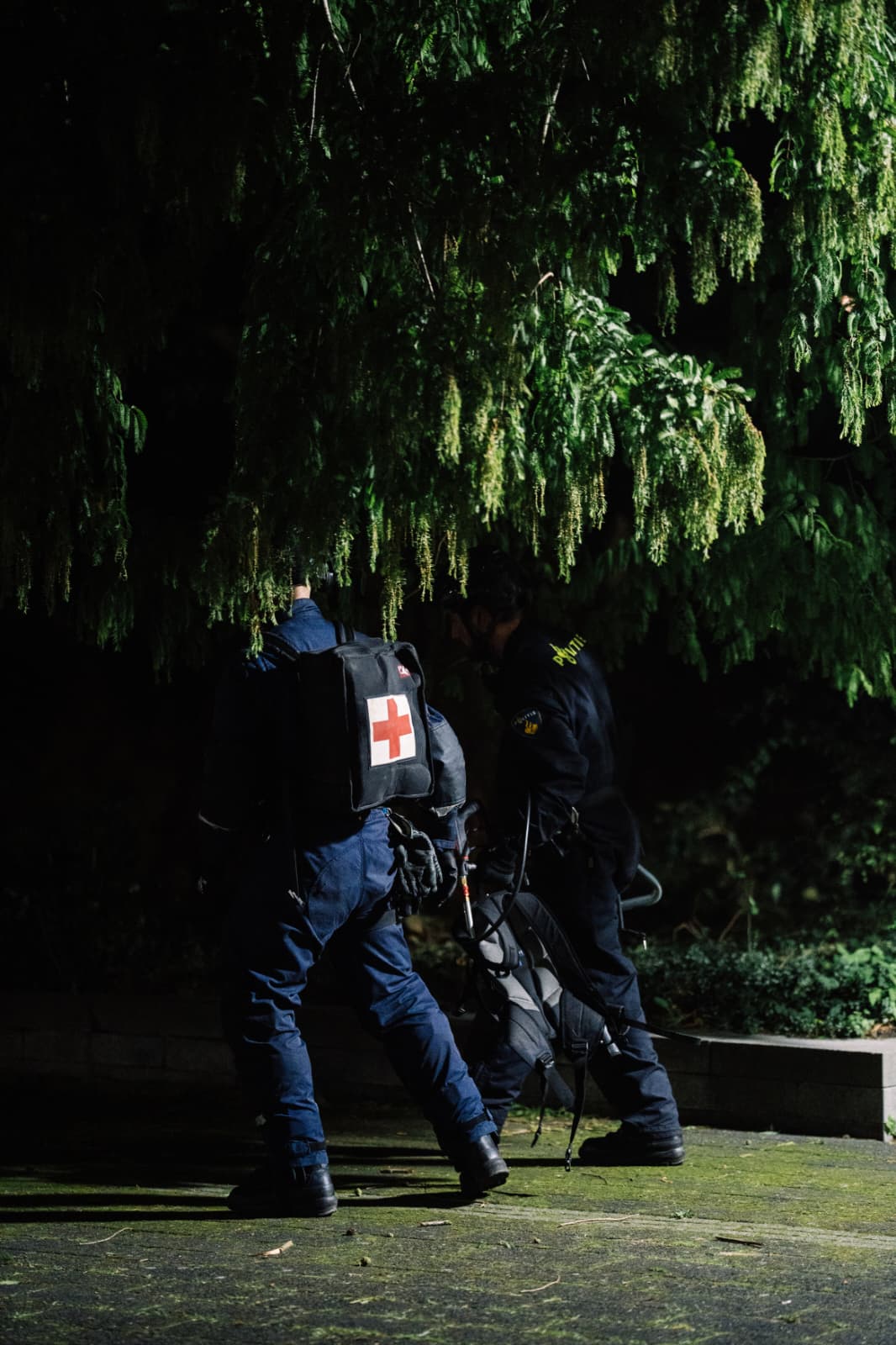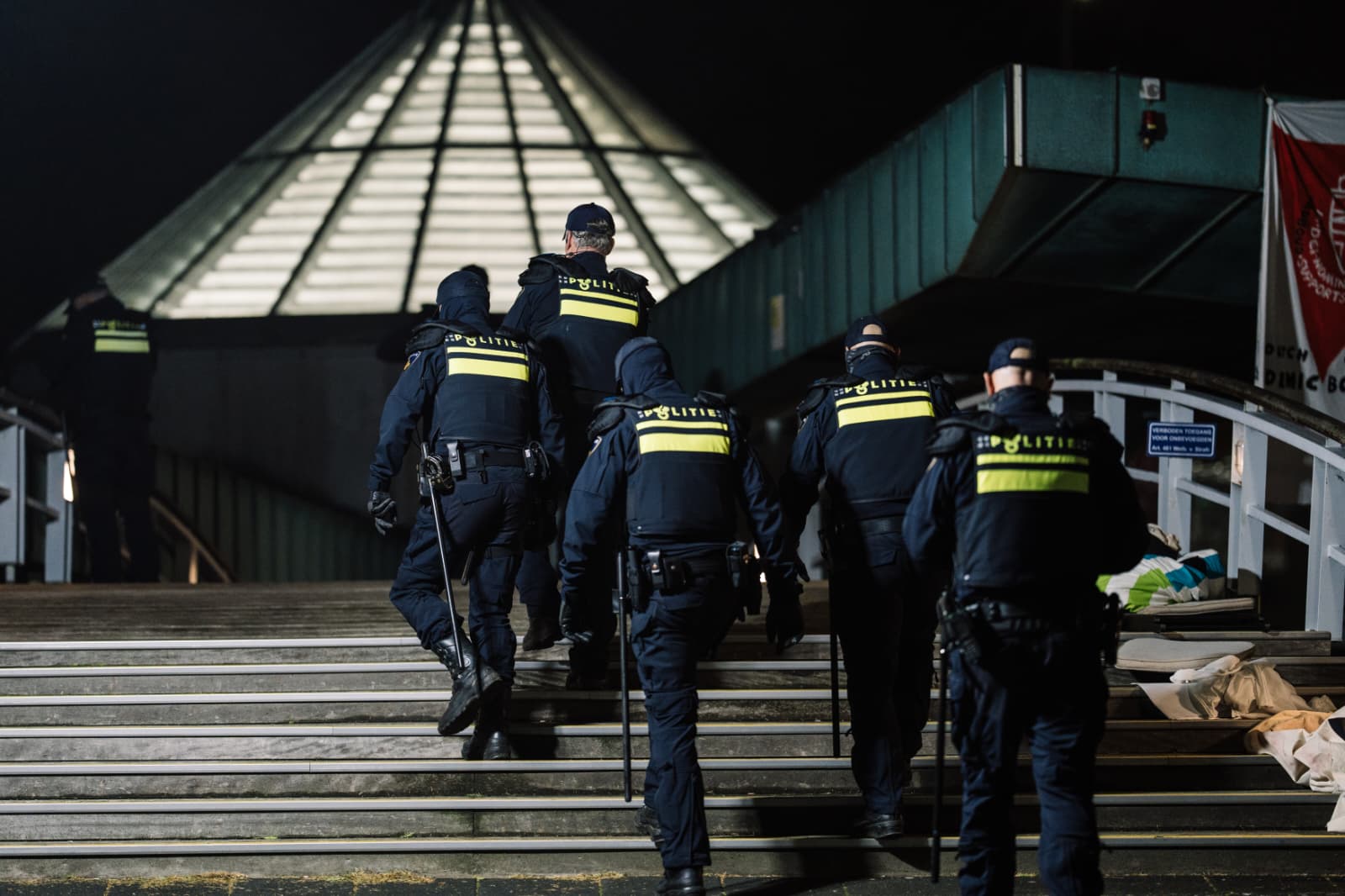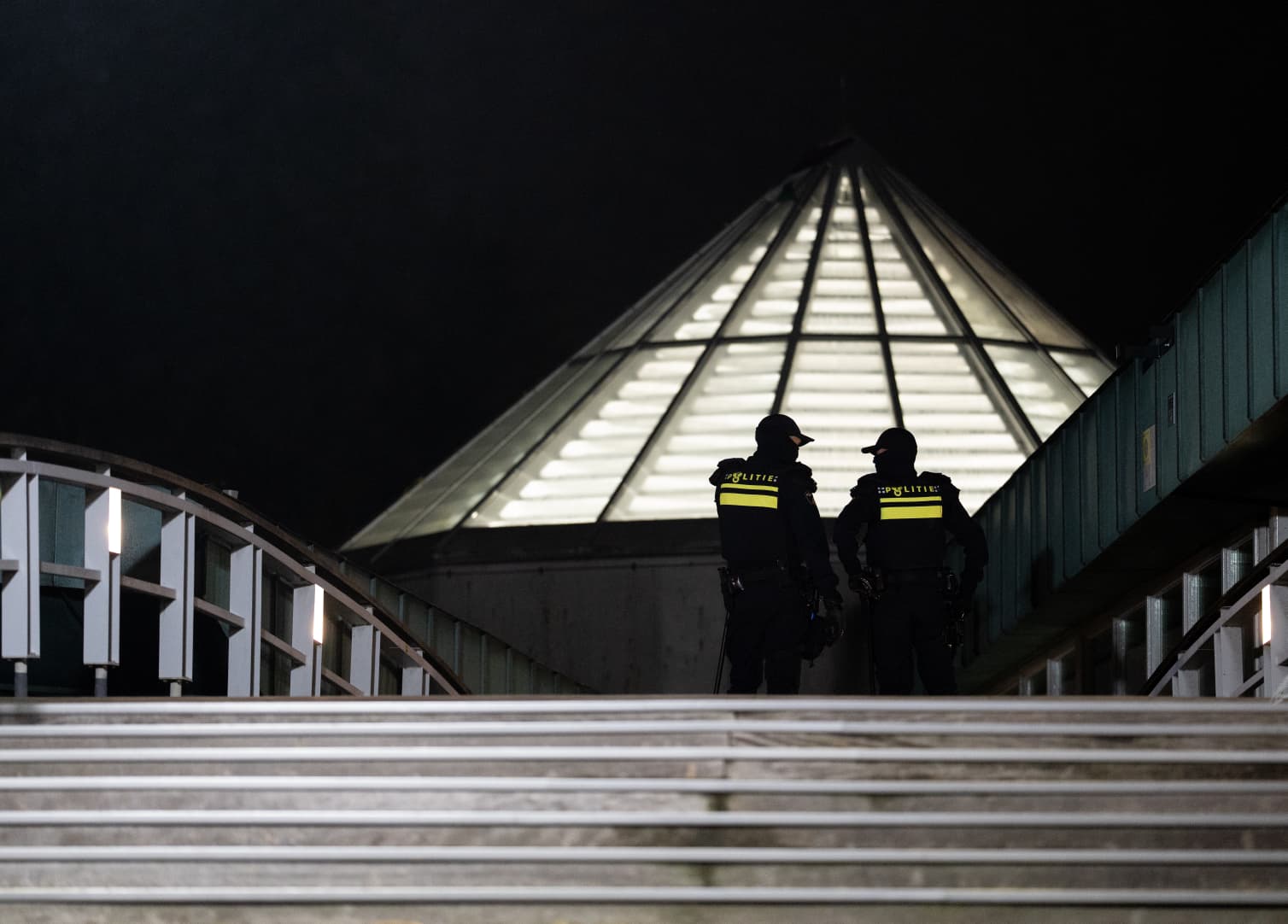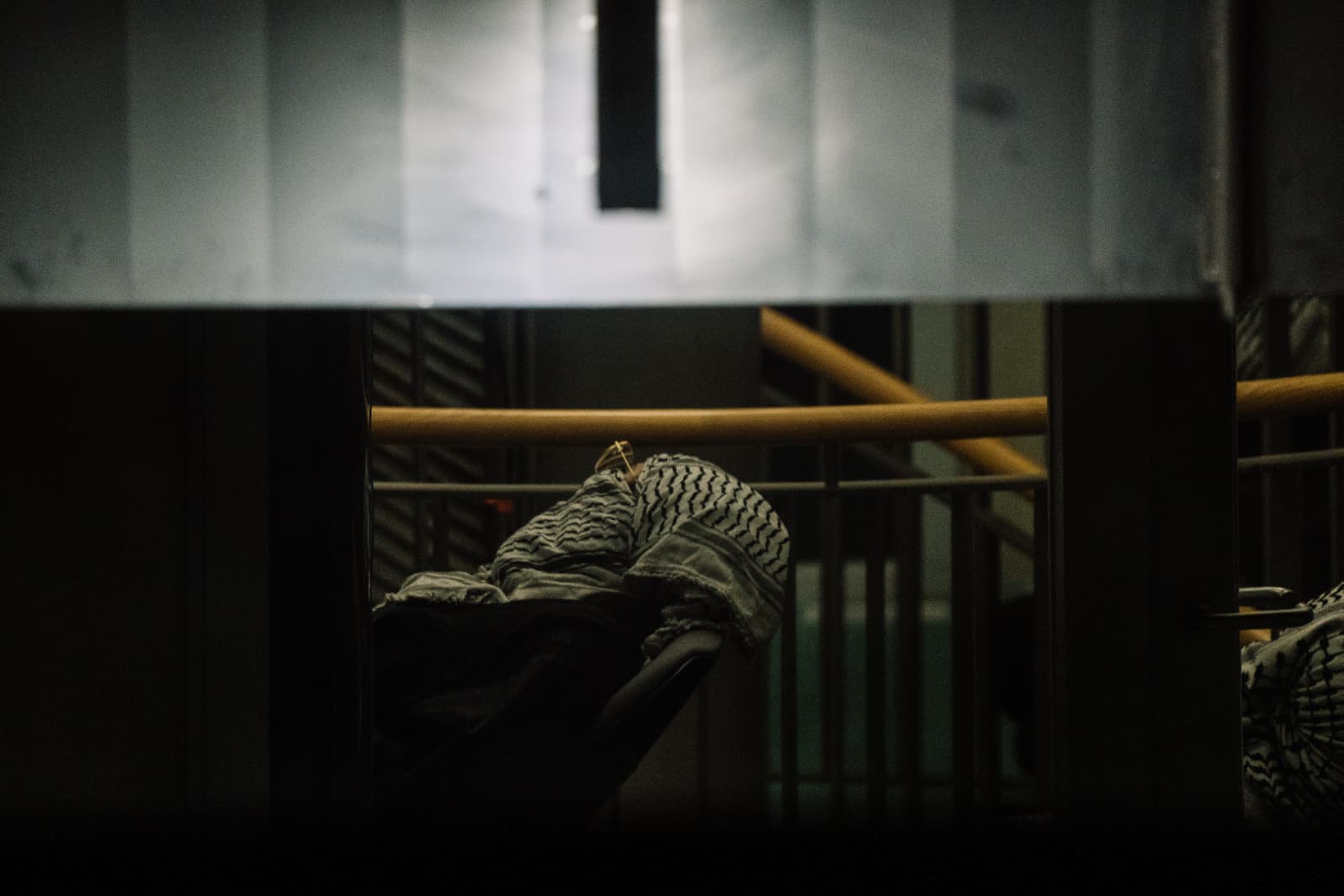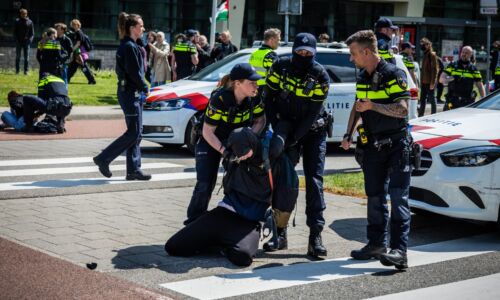-
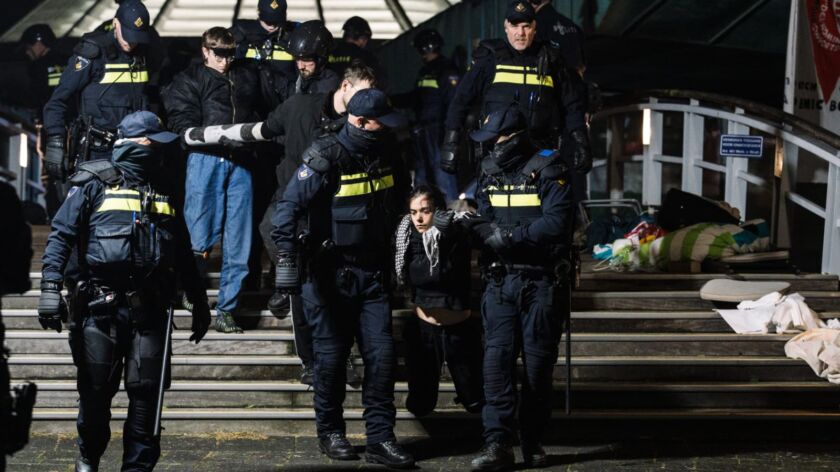 Foto Johannes Fiebig
Foto Johannes Fiebig
A large-scale crackdown by police, fire brigade and bomb experts ended the occupation by Pro-Palestine demonstrators of the Goudsmitpaviljoen last night. More than 20 activists were arrested.
The police and fire brigade started dismantling the occupation of the Goudsmitpaviljoen on the university campus around 7.30 p.m. last night. Activists who had chained themselves to a bridge on the outside of the building were carried away. The remaining protesters in the building itself were removed around midnight.
According to De Gelderlander, 23 activists were arrested for trespassing.
Protesters in chains
The occupation of the laboratory behind the Huygens building began at 9.30 a.m. this morning. Pro-Palestine demonstrators locked the building from the inside. Protesters also gathered at the door, securing themselves to railings and to each other. The activists demanded that the University cut all ties with Israel.
Both the Dean and the director of the Goudsmit Lab repeatedly informed the activists of the dangers in the building on Tuesday, and urged them to leave. Around 12 noon, a university spokesperson did the same.
Safety triangle
According to Dean of the Faculty of Science Sijbrand de Jong, the University reported the situation to the police because of the safety hazard. ‘After that, it was out of our hands, and in those of the security triangle,’ he said.
According to Mayor Bruls, ‘the limit had been reached’
Mayor Hubert Bruls expressed to De Gelderlander that ‘the limit has been reached’ and that he was forced to put an end to the situation. ‘It is no longer a demonstration if a dangerous situation is deliberately being created whereby the occupiers are putting their lives in danger.’
‘No negotiation’
Aside from the protesters in and around the Goudsmitpaviljoen, there were other activists on campus today holding a support demonstration. They stopped at the Huygens building. A crisis consultation took place, starting at 1 p.m. Shortly afterwards, Rector José Sanders and Vice President Agnes Muskens addressed the protesters, stressing the dangers of the situation to the activists and asking them to leave as soon as possible. The protesters did not respond to that request either.
In the course of the afternoon, more and more police arrived on campus; a police helicopter also circled over the Huygens building. Police officers then cordoned off the back of the building.
Meanwhile, a dozen fire engines and a multi command unit from the Gelderland-Zuid Safety Region gathered at the front of the Huygens building. Inside, about 50 students and staff were following the developments closely.
At 6.30 p.m., the police reported on X that they had received the order to end the action. Moments later, bomb experts from the Defence Explosive Ordnance Disposal Service (DEODS) asked the journalists present to stand a little further away.
Riot vans on campus
An hour later, a dozen riot vans arrived on campus. In addition to the 40-50 SWAT officers, some 80 other policemen and firefighters were also present. Shortly afterwards, the building was requisitioned and protesters who had chained themselves to the walkway were cut loose with a grinder.
Removing the remaining occupiers from the Goudsmitpaviljoen seems to present more difficulties for the police. Indeed, the pavilion houses superconducting magnets cooled with liquid helium, several degrees above absolute zero. If that gas escapes, it will displace the oxygen in the air.
Meanwhile, the remaining activists in the pavilion are spinning around on an office chair.
